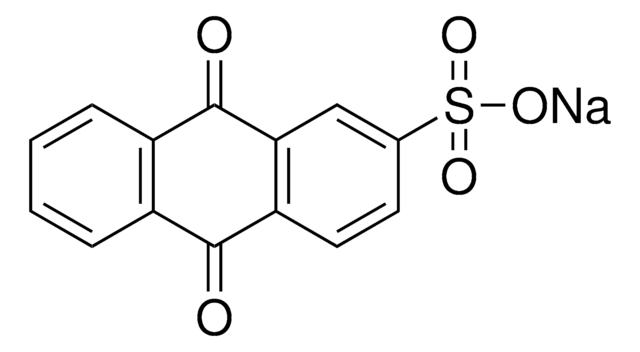186341
1-Naphthalenesulfonic acid
>50%
Seleccione un Tamaño
Seleccione un Tamaño
About This Item
Productos recomendados
Formulario
solid
concentración
>50%
mp
77-79 °C (lit.)
solubilidad
alcohol: freely soluble
diethyl ether: slightly soluble
water: freely soluble
cadena SMILES
OS(=O)(=O)c1cccc2ccccc12
InChI
1S/C10H8O3S/c11-14(12,13)10-7-3-5-8-4-1-2-6-9(8)10/h1-7H,(H,11,12,13)
Clave InChI
PSZYNBSKGUBXEH-UHFFFAOYSA-N
Información sobre el gen
human ... EGFR(1956) , LCK(3932)
Categorías relacionadas
Descripción general
Aplicación
Otras notas
Palabra de señalización
Danger
Frases de peligro
Consejos de prudencia
Clasificaciones de peligro
Eye Dam. 1 - Met. Corr. 1 - Skin Corr. 1B
Código de clase de almacenamiento
8A - Combustible corrosive hazardous materials
Clase de riesgo para el agua (WGK)
WGK 3
Punto de inflamabilidad (°F)
Not applicable
Punto de inflamabilidad (°C)
Not applicable
Elija entre una de las versiones más recientes:
¿Ya tiene este producto?
Encuentre la documentación para los productos que ha comprado recientemente en la Biblioteca de documentos.
Los clientes también vieron
Active Filters
Nuestro equipo de científicos tiene experiencia en todas las áreas de investigación: Ciencias de la vida, Ciencia de los materiales, Síntesis química, Cromatografía, Analítica y muchas otras.
Póngase en contacto con el Servicio técnico












